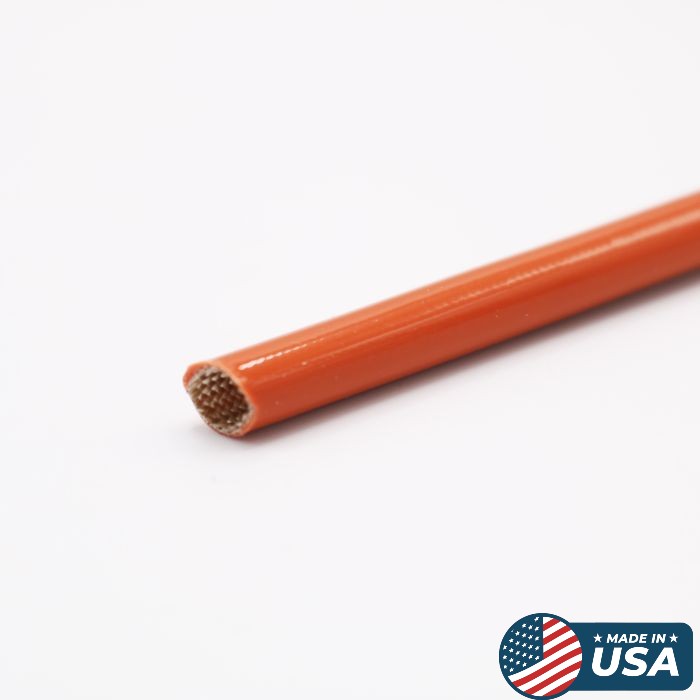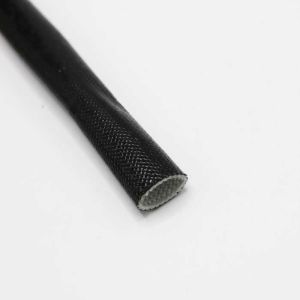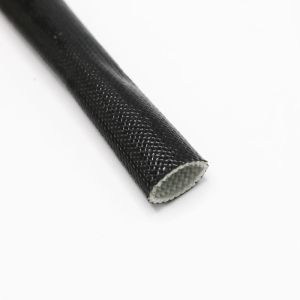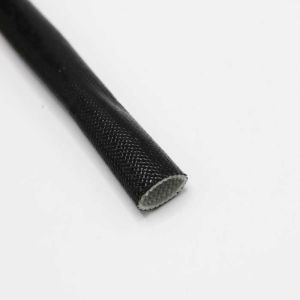Silicone Coated Fiberglass (200C)

Silicone Coated Braided Fiberglass Sleeving
A durable, heat- and electrical-resistant silicone coating and braided fiberglass inner lining provide incredible protection against heat and high voltage at various levels. It's resistant to acids, weak alkalis, esters, fungus, and corona treatment (the electrical, not viral kind).
It's also flame-resistant, flame-retardant, and self-extinguishing. The coating maintains electrical integrity even after being burnt because it creates a non-conducting ash layer.
We have four types available. Dielectric Grade A has an average breakdown of 8000 Volts; dielectric Grade B is 4000 Volts, dielectric Grade C's average breakdown is 2500 Volts, and our heavy-Duty can take up to 15000 kiloVolts. Operating temperatures for all three are from -94°F to 392°F (-70°C to 200°C).
A: Yes, but silicon and silicone are two different things. The element silicon is what's called a semiconductor, which is what makes it part of the basis of all modern computer circuits — and what gave Silicon Valley its name.
At lower temperatures, pure silicon is a poor conductor of electricity because of its atomic structure — its outer electrons are attached too tightly to allow current to flow. At higher temperatures, it does become a semiconductor and current flows. Silicone is a synthetic polymer that combines silicon with oxygen and other elements, usually hydrogen and carbon, giving it high heat tolerance.
A: No. Silicone is incredibly fire resistant, and will probably not catch fire at regular temperatures found in a home or kitchen. It can catch fire above temperatures of 482ºF (250ºC), but it doesn't behave like other substances reacting to heat.
Most things will melt first as they heat up, which you're familiar with if you've ever put ice into a warmer liquid. Some will even sublimate, meaning that they go from solid to gas without being liquid in between. The most common example of this is dry ice, which is just frozen carbon dioxide. Silicone remains solid until it ignites, the main byproduct of which is silicone dioxide, also known as sand or glass.




